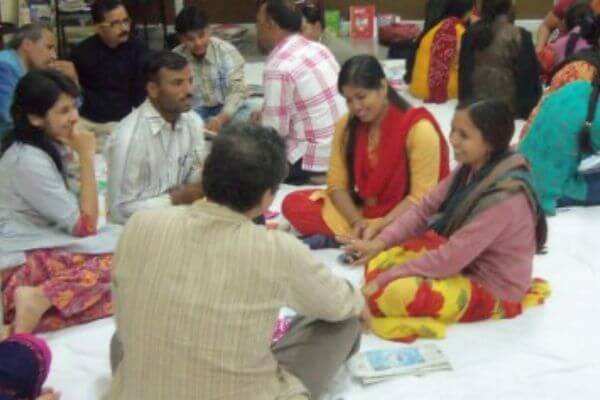
Loading...

Loading...
Book – The Sad Little Fact
Author– Jonah Winter
Illustrator– Pete Oswald
Publisher– Schwartz & Wade Book, Penguin Random House, New York
Date– 2019
‘It was sad. It was little. It was a fact. Nobody believed it. People accused it of being fake. They tried to bury it. They tried to destroy its spirit. But facts are stubborn things…’
The title of the book caught my attention when I was browsing through new releases of 2019. A book for children which does not sanitize childhood reality, no frills or wishy-washiness, hints that it is trying to bring out the key, which has been pushed under the carpet for years, to open a reading experience that leads to critical thought about what appears ‘normal’ and why. And often we find them confident in its telling.
The Sad Little Fact is a story of conviction and an enjoyable read. It is a picture book with a short text. The book opens into jet black pages, and then bursts into white as it begins with, “There was once a fact.” And right there we find a tiny creature, fact, with big wide eyes, with a look of ‘what’s-going-on!’, unfathomed. Very simply the teller puts forth how people call fact a lie, misinterpret, disbelieve, which makes it sad. Then comes Authority demanding fact to admit that it is not a fact. Of course fact cannot not lie, ‘a fact is a fact’! It is thus put in a box, locked and buried underground. In the dark Earth below, fact meets other facts who have also been put six feet under, and together they make a plan. The story makes struggle of the facts amply clear, to live, to be heard and hold its identity. The constancy of hope and confidence makes the story a powerful one.
With every turn of a page, I find the book to have scope for intense thinking and a dialogue over a wide range of topics – of conflict, crisis, sabotage, war, pandemic, domination, multi-faceted power-plays and more. With all age-groups. In fact, I would consider the book a phenomenal one for teacher training and for adults who work with children, not only for browsing and quiet reading, but treating it as a starting point to think, question and debate on the very many historical incidents, of the recent past, of now and the future. I am sure none of us can deny that there is sadness and conflict in children and in adults. Then why the reluctance to bring it up and discuss? Does that need teaching too; I wonder. ‘Conflict’ has been an age-old bone of contention. This book gives an opportunity to work towards good thought, building critical perspectives, wondering, questioning and problem solving. We have a range of cases to pick from, or better still, we may pick none, instead let children do – have them draw a picture of conflict, act out what saddens, scares and troubles, what they hope for and aspire and the challenges therein. Because education in our country has repeatedly avoided addressing issues that involve conflict, forever undermining its pedagogical merit (Krishna Kumar, Learning from Conflict), now is the need to set a change.
Stories have a magical effect. I am convinced that children will be able to see themselves in the story, and adults too without a doubt. The multitude of facts in the universe lie in the objective and subjective plains. Understanding them through different lenses of the looking glass is pertinent. As a response to this story, I can hear some voices saying, ‘Indeed, a fact is a fact, but whose, mine or yours?’ And for that I borrow Dylan to say –
Come gather ‘round, people
Wherever you roam
And admit that the waters
Around you have grown
And accept it that soon
You’ll be drenched to the bone
If your time to you is worth savin’
And you better start swimmin’
Or you’ll sink like a stone
For the times they are a-changin’

Pyari Madam is the story of a young school girl who interacts with her teacher through her diary, where she opens her heart out…

Libary Educators Course 2014 concluded